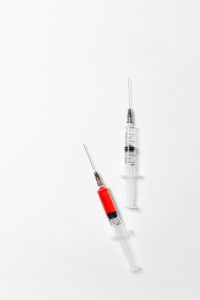How Can We Help?
How is the Moderna COVID-19 vaccine different than the Pfizer one, and when is it coming?

The Moderna vaccine is very similar to the Pfizer vaccine. They are both messenger RNA (mRNA) vaccines. The mRNA in the vaccine tells our cells to make a protein that, to our immune system, looks just like the “spike protein” which the SARS-CoV-2 virus uses to enter our cells. The immune system responds by making antibodies to this spike protein, protecting us by blocking the ability of the virus to enter cells.
Both vaccines are 90% to 95% effective. Both cause adverse effects like fever, chills, and aches, although the Moderna vaccine may cause slightly more side effects than the Pfizer vaccine. They are both injected into an arm muscle and both require 2 doses to get to the 90-95% level of immunity. Neither contain or are derived from the actual SARS-CoV-2 virus, and neither has the possibility of causing COVID infection.
There are a few differences between them. The biggest difference is the temperature and storage requirements: the Moderna vaccine is easier to ship and store because it does not require super cold freezer temperatures, unlike the Pfizer vaccine. It is also packed in smaller boxes containing only 100 doses, making it easier to deliver to hard to reach rural and small areas. The Pfizer vaccine requires two doses spaced 3 weeks apart, versus two doses 4 weeks apart for the Moderna vaccine.
California received over 600,000 doses from Moderna and almost 200,000 doses from Pfizer last week, going to hospitals and public health departments to enable vaccination of front line healthcare workers and residents of nursing homes. Nationwide, 6 million doses of Moderna vaccine and 2.9 million doses of Pfizer vaccine will be distributed during the “first round.”
Sky Pittson, MD, December 30 2020


